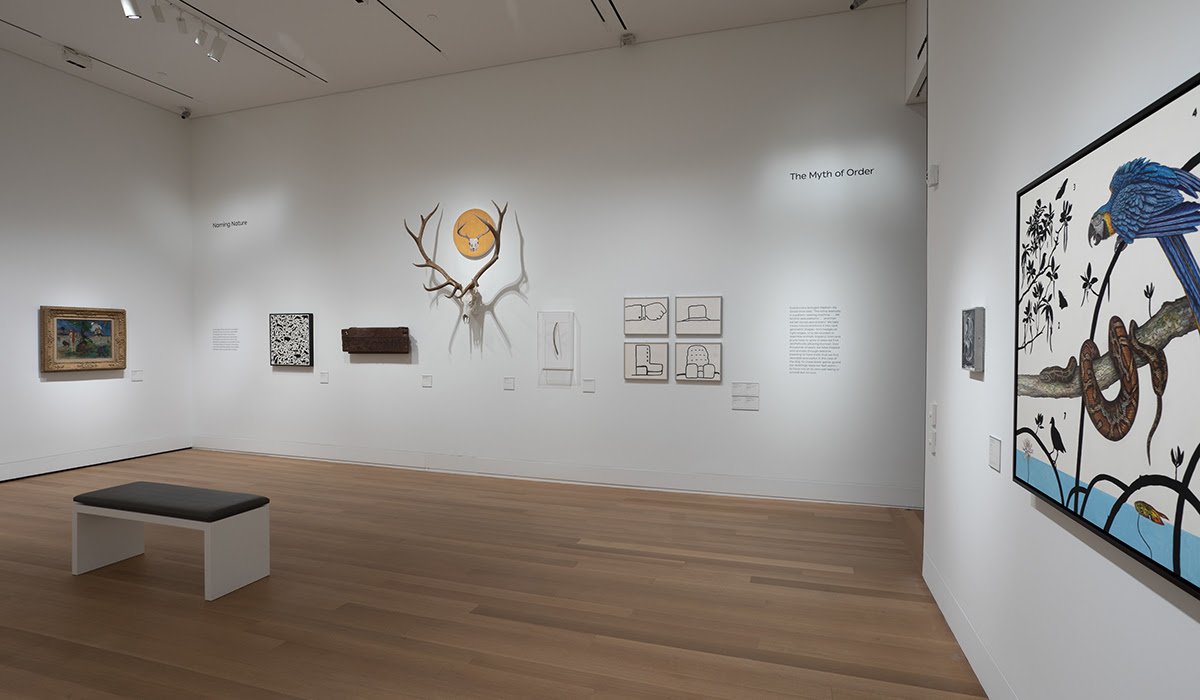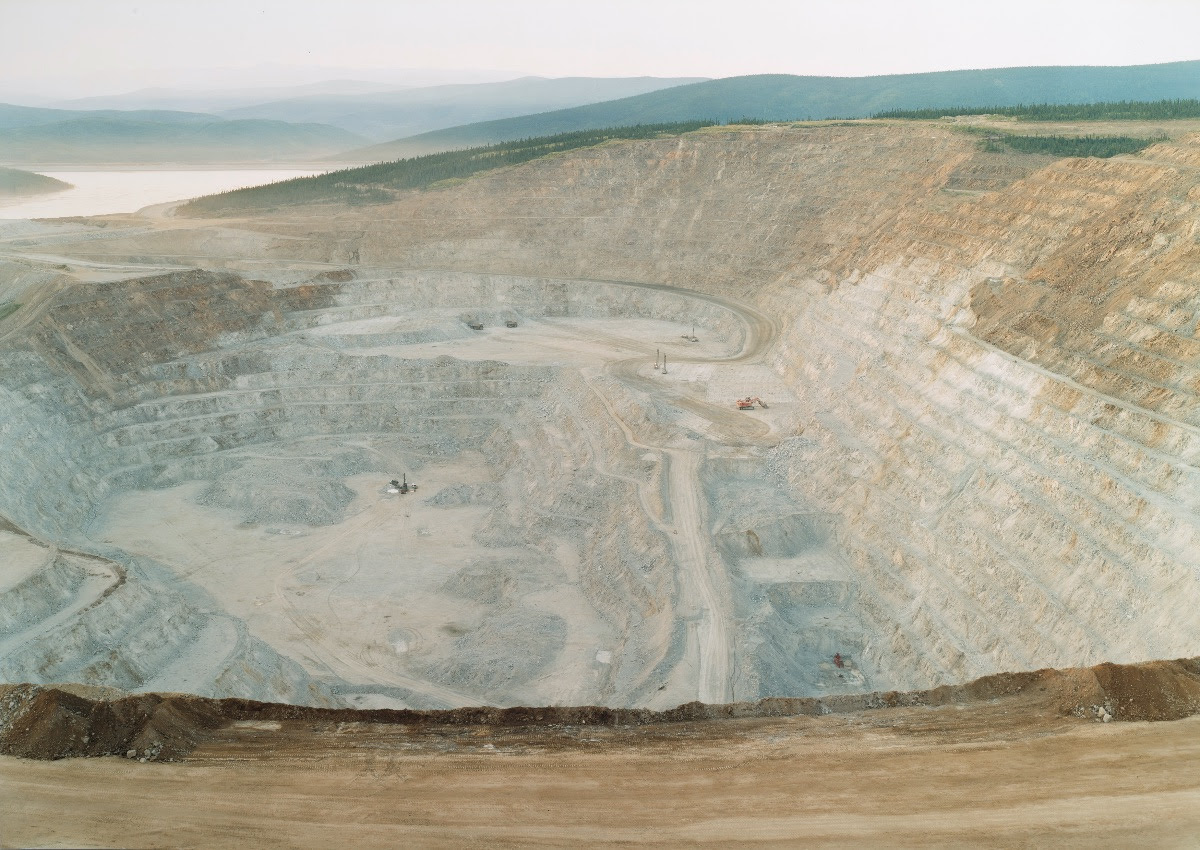EARTH DAY CELEBRATION
The World Through an Artist’s Eye
In light of the current pandemic, the art, writings, and ideas of artist James Prosek are newly relevant. In the exhibition James Prosek: Art, Artifact, Artifice, the artist shows us that boundaries are made to be broken and that our wondrous world is more interconnected than we might imagine. |
 |
|
READ
Exhibition Catalogue
|
|
|
WATCH
Artist in Conversation with Yale Professor
|
|
| Listen to the complete audio tour for James Prosek: Art, Artifact, Artifice.
Listen to James Prosek describe “lucid dreaming” and the powerful connections between drawing and interacting with nature.
Listen to David K. Skelly, Director of the Peabody Museum of Natural History and an avid fly fisherman, discuss biological mimicry and its role in animal survival. |
|
|
ENGAGE WITH THE COLLECTION
|
|
Victoria Sambunaris, American, born 1964, M.F.A. 1999
Untitled (Fort Knox Gold Mine) Fairbanks, Alaska
2003
Chromogenic print mounted to aluminum |
 |
|
| Victoria Sambunaris explores in her work the many ways in which industry has altered the Earth’s surface. Photographs like this both document the changing environment and critique practices like mining that are contaminating and scarring the landscape.
——————————- |
| During visits to the Gallery to view this work, Yale classes and other visitors grapple with how to balance the aesthetic value of the photograph alongside the work’s grim assessment of humanity’s impact on the environment. |
|
Wallace Nez, Diné (Navajo) and American, born 1972
Untitled,1999, Earthenware with pigment
Many artists from Indigenous nations in the Southwest make pots to store seeds in the winter. Pots like this have a tiny opening at the top that allows one seed to be placed inside at a time and protects the seeds from hungry animals. |
| Wallace Nez is known for his intricate designs. He decorated this hand-coiled seed pot with fine geometric forms. At just 3 × 3 1/4 inches (7.6 × 8.2 cm), the object is not much larger than the hummingbirds it depicts.
To learn more about seed pots, watch the full interview with Indigenous potter Linda Tafoya Sanchez (Santa Clara Pueblo). |
|
FEATURED AUDIO
Albert Bierstadt, American, born Germany, 1830–1902
Yosemite Valley, Glacier Point Trail
ca. 1873
Oil on canvas |
|
|
| Listen to Mark D. Mitchell, the Holcombe T. Green Curator of American Paintings and Sculpture, discuss the significance of the Yosemite Valley and the role this picture played in shaping an image of the West in the late 19th century. |
|
HELPING THE PLANET
Committed to Sustainability
– The Gallery’s indoor air quality is protected by the use of only natural cleaning and maintenance materials, providing the safest environment to our visitors and to the art.
– We have reduced heating and cooling consumption by 23%over the past five years in all our facilities.
– We have transitioned to LED lights in a third of our facilities, resulting in a 75% reduction in electricity costs. |
|
– In the Wurtele Study Center, we have outfitted cases with a microclimate system that eliminates the need for hand-cleaning silverand other art objects. |
|
|
MAKE A DIFFERENCE
Support the Gallery’s Annual Fund
|
 |
|
| Gifts to the Annual Fund strengthen the Gallery’s ability to respond to uncertain times. To everyone who has a made a recent gift, we say thank you.
Download and read the 2018-19 Yale University Art Gallery Annual Report. The Annual Report is issued at the conclusion of each fiscal year and provides an overview of the Gallery’s exhibitions and programs from the previous 12 months. |
|
|
| The Yale University Art Gallery is currently closed until further notice. The Gallery is working in close collaboration with Yale University leadership to safeguard against the spread of coronavirus disease 2019 (COVID-19) and to ensure the safety of our visitors and staff. Please continue to check our website in the coming days and weeks for additional information or changes to the Gallery’s public services. Learn more > |
|
|
|

